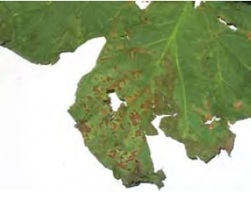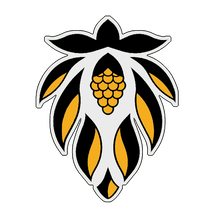|
Downy mildew (DM) of hops is a major disease that affects many susceptible cultivars of hops. It can severely damage both the hop plant as well as making the cones unsuitable for harvest. This discussion pertains to using post harvest DM controls to help hopyards recover from a season of high downy mildew infection. Many hop growers do not understand the importance of controlling downy mildew in their hop yard after harvest is completed. The fungus and the infection are not as visible as springtime symptoms. Many growers consider the season as finished at harvest and leave the yard unattended going into winter. This is a fundamental mistake in controlling DM in infected hopyards. Downy mildew is active whenever conditions permit – it simply doesn't care if it is springtime, summer, or fall. If green plant tissue, moisture and the right temperatures are present, DM will remain active. Post-harvest fungicide applications and controls can be an effective way to manage downy mildew in yards that have had the disease present and reduce the severity of downy mildew spikes that emerge during the following spring growing season.  leaf lesions caused by downy mildew. (D. H. Gent) leaf lesions caused by downy mildew. (D. H. Gent) Downy mildew, like most molds and mildews, persists and spreads during the growing season mainly through air-borne spores which infect new leaves and growth whenever environmental conditions are favorable. In the Fall season, however, downy mildew “morphs” into a different creature; producing a specialized motile spore type called a zoospore. This spore acts much more like a living microscopic worm than a fungal spore. The motile zoospore form helps downy mildew complete its annual life cycle by finding a safe resting place for it to overwinter or by forming protective dormant oospores. These forms of DM exist outside of the plant in the soil where it is outside its host and can be interrupted at this point.  Forum is a systemic protectant fungicide made by BASF that has some curative properties for the control of Downy mildew in hopyards. Like most fungicides, it works best if it is applied before the conditions for disease to develop occur. It carries a caution label rating and can be applied up to 7 days before harvest, 3 times per season total. Compatible with most other fungicides and insecticides in a tank mix. Forum is one of the only systemic fungicides with antisporulant activity that fights sporangia before the fungalspores have a chance to form and produce destructive zoospores that infect tubers and leaves.The spore-stopping effect of Forum can control the further spread of downy mildew in already infected fields. Forum's active ingredient is dimethomorph. This class of fungicides is very susceptible to build up of resistant downy mildew. It should only be applied in rotation with other mode of action (MOA) fungicides and never twice in a row without another fungicide. It cannot be applied to hops aerially or through drip irrigation. Through spray coverage is essential, so proper nozzle selection (like hollow cone) and addition of a surfactant/ spreader/sticker is recommended for best control results. Grower notes: Forum is a "big gun" - very effective at close range! Where does it fit into an IPM program? Probably fits best in three places (remember, you can only spray this one 3X total per year). First, as an early spring spray on emerging hop shoots in a hopyard that is known to be infected with downy mildew. The idea is to spray the infected emerging shoots BEFORE they sporulate. Second, as a spray during a period when conditions for downy mildew to develop exist (again, only in fields with identified downy mildew present). Third, as a preventative spray after harvest on remaining folige and bines when late late mildew conditions exist. This late spray stops formation of the motile zoospores which infect the crowns and over-winter there till next Spring. Don't just spray this one for the heck of it - save the "big gun" for when you need it!
|
Details
Blog AuthorLynn, the head hop grower at Great Lakes Hops has over 30 years of experience in the horticultural field. Browse the blog articles here to find useful growing information for humulus lupulus, based on personal experience and observations at Great Lakes Hops. Archives
January 2020
Categories
All
|


 RSS Feed
RSS Feed